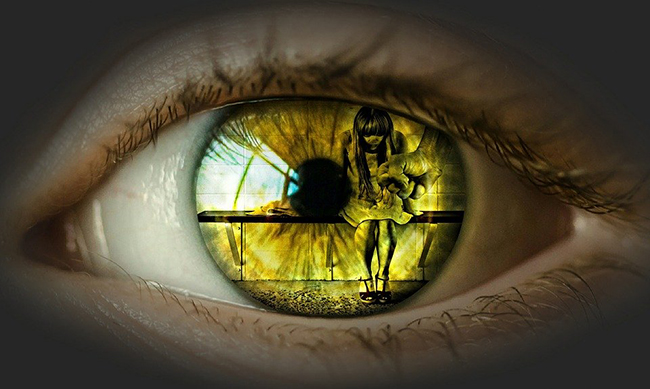News & Events
Untold stories behind gender-based violence in South Africa
The list is too long. The pain is unbearable. It has become a norm. What if it happens to me? What have we done? What is the next step? What needs to be done? Men are silent. These are phrases extracted from both direct and indirect victims of gender-based violence as they express themselves in social media platforms. It tells that now is undeniably justifiable for the South African government to declare it as a ‘state of emergency’. The nation is wounded, bleeding, hopeless and helpless about the situation. More than one incident is reported in a day, and these are women and children horribly raped, murdered, and buried in our communities. The situation is becoming more uncontainable and creates a lot of anxiety amongst women and young girls of this country concerning their safety.
Recently we have seen the establishment of movements such as #AmINext, #NotInMyName, to mention a few, purposely aimed at ending femicide. These movements not only played a significant role in alerting the country of the magnitude at which the incidents happen, but also braced its people against the injustice. As you may have noticed, these movements influenced talks about punitive policy structures in various platforms including parliament (e.g. discussions around passing the death penalty bill). They played a crucial political role in raising awareness about the emergency, prompting decision-making in policy-making structures. The silence of these movements is not something the country wishes to witness. They must feature in the national question of ‘what is the next step?’
This text seeks to provide an analysis on how black males and females’ shattered gender roles relatively contribute to femicide and sexual abuse of children. The country is at a standstill with women killed like animals and buried in yards. A question is asked on the next step that must be taken after law enforcement has proven to be ineffective in fighting domestic violence. But I believe that society is not adequately curious about itself. There is a necessity to gauge our cultural practices, education system, relationships, religion and work culture, and the manner in which they shape our interpersonal relationships. Nonetheless, debates on ‘what is the next step’ are paramount to allow for contestation of ideas and yield a clear way forward.
Less is said about the culture of performing virginity testing, forced teenage marriages and female genital mutilation. It must be known that I am not in any way attempting to devalue our ethnicities or traditions. These are practices usually overlooked when we contend with and re-adjust to the changes in the external environment. It’s an undisputable fact that culture is not static but changes from time to time due to globalisation. This should of course reform our cultural practices. Thus, one would say ‘we need to establish our understandings and trends in the social world in terms of culture and emphasise humanity without regretting involuntary trends in our ways of life’. Every act must be performed with a sense of humanity, observing human rights.
On the other hand, discussions on femicide cannot be isolated from cultural practising iSithembu (polygamy) in circumstances where the law is not observed. For instance, we are faced with an era of post-colonial churches preying on the future of young girls through acts of child marriages. It happens also in certain cultures, within our clans. I sometimes question the sitting pattern at churches where women sit on one side and men the other side. Besides, why is it that the majority of priests are men and women get the crown through marriage? If the society cannot interrogate the abuse of women within its own religious and cultural spectrums, then we might as well learn to live with it.
The decolonisation project has successfully achieved its mission to exclude the participation of women in the economy of this country. Post the 1994 national democratic elections we still witness the exclusion of women in production sectors of the economy and leadership responsibilities (e.g. women are still battling to break through glass ceilings at leading institutions of higher learning). Instead, mainstream population is subject to nurturing and caregiving activities, and are in clerical work, nursing, social work and teaching professions. The background to this can be traced in tertiary institutions where young girls seldom enrol for science, engineering and technology programmes.
In most of the books I read or any type of literature, when the author makes an example related to adventure activities, construction and engineering, they use characters symbolising men (e.g. he, his). This breeds exclusive patterns of economy and leadership roles in both the public and private sector. In basic education, the majority of principals are men. It is at all times expected that a principal of a certain school will be a man, and where it is a woman, we are surprised. These are the disabilities of our education system in as far as gender inequality is concerned.
Lastly, and yet a bit controversial, is the discussion around parental supervision and gender-based violence. How do they relate? I have always held the view that a woman raises and looks after a man throughout their lives. The reason I am saying this is because she carries you for nine months, endures labour pains during your delivery and feeds you. Throughout the period of childhood and adolescence a man is in the custody of a woman. In most cases, a boy child goes to play soccer after school whereas a girl child has to do household chores. Later on, in early adulthood, a man still needs a woman.
Women are beautiful, caring, loving, great and powerful creatures that are today neglected by society. They also undergo a lot of pain if not appreciated for their efforts and openly express their emotions. This can affect children’s experiences and their well-being. The worst part is that this can also breed monsters just like when a boy child comes back from school and explains to parents that he was bullied by a girl, in most cases, men especially, encourage the child to never be defeated by a girl. In so doing, we are building the kind of sick society we are in today. It then makes us all responsible for this calamity and calls for a need for us to unite in the fight against gender-based violence.
Today, being a woman in South Africa is a threat. It is no longer associated with how amazing and wonderful these beings are, but with rape and murder. In a family, a woman is no more entrusted with making household rules. She’s now made an object or instrument to boost masculinities. South Africa is not like Namibia. In the Himbo tribe, a man needs three cows to marry a woman, but, if he kills his wife, he pays 40 cows to the bride’s family, and the government becomes involved. The judiciary is overwhelmed by femicide and rape cases, and punishment seems not to be effective in ending violence against women. The law enforcement is battling with this dilemma. Women are not speaking out when threatened but only wait for violence to happen.
What is the next step? The country is at a question mark!
*By Mashaole Lucas Mamabolo, National Postgraduate Officer, National Student Representative Council (NSRC)
Publish date: 2020/06/30

